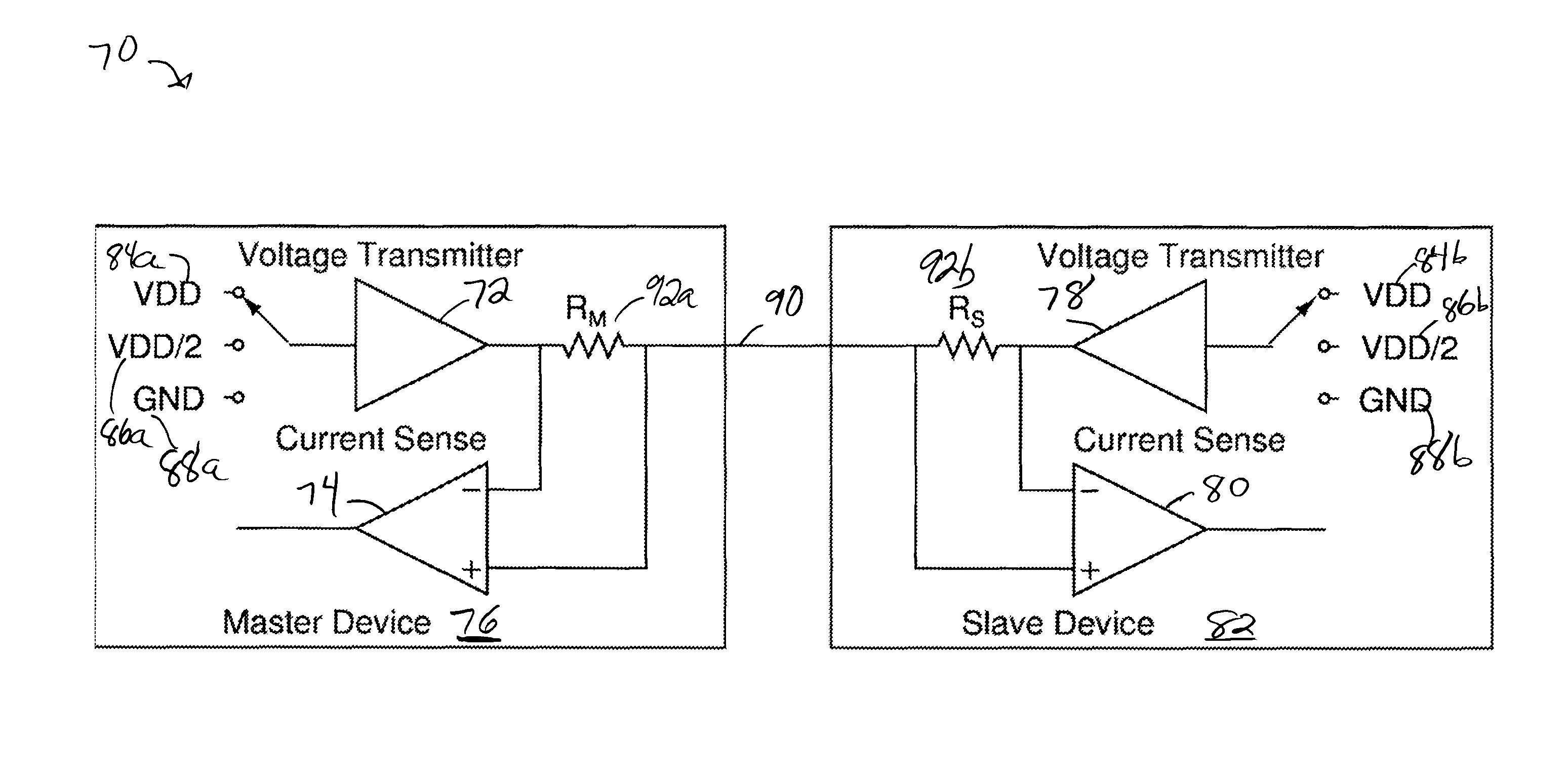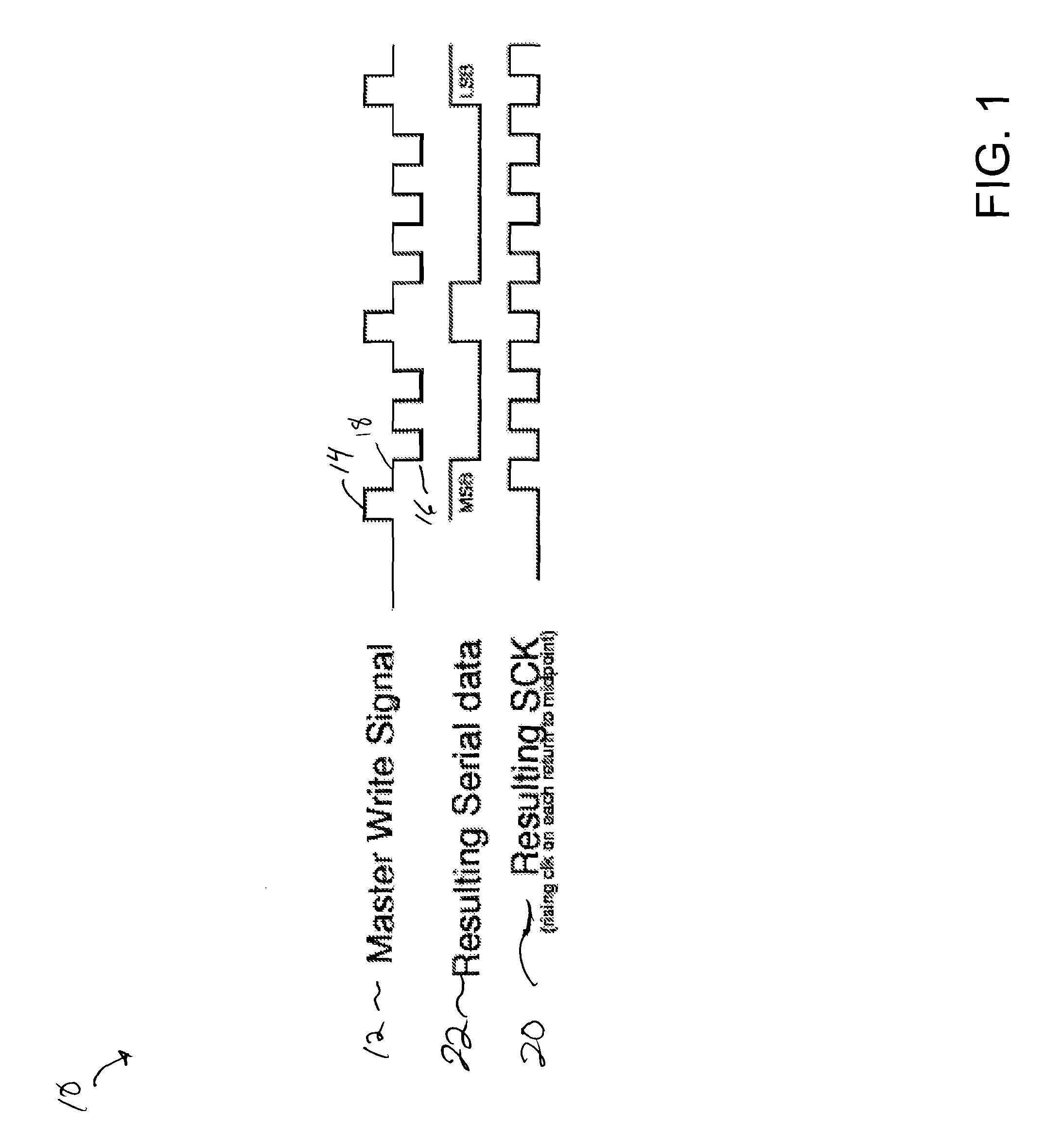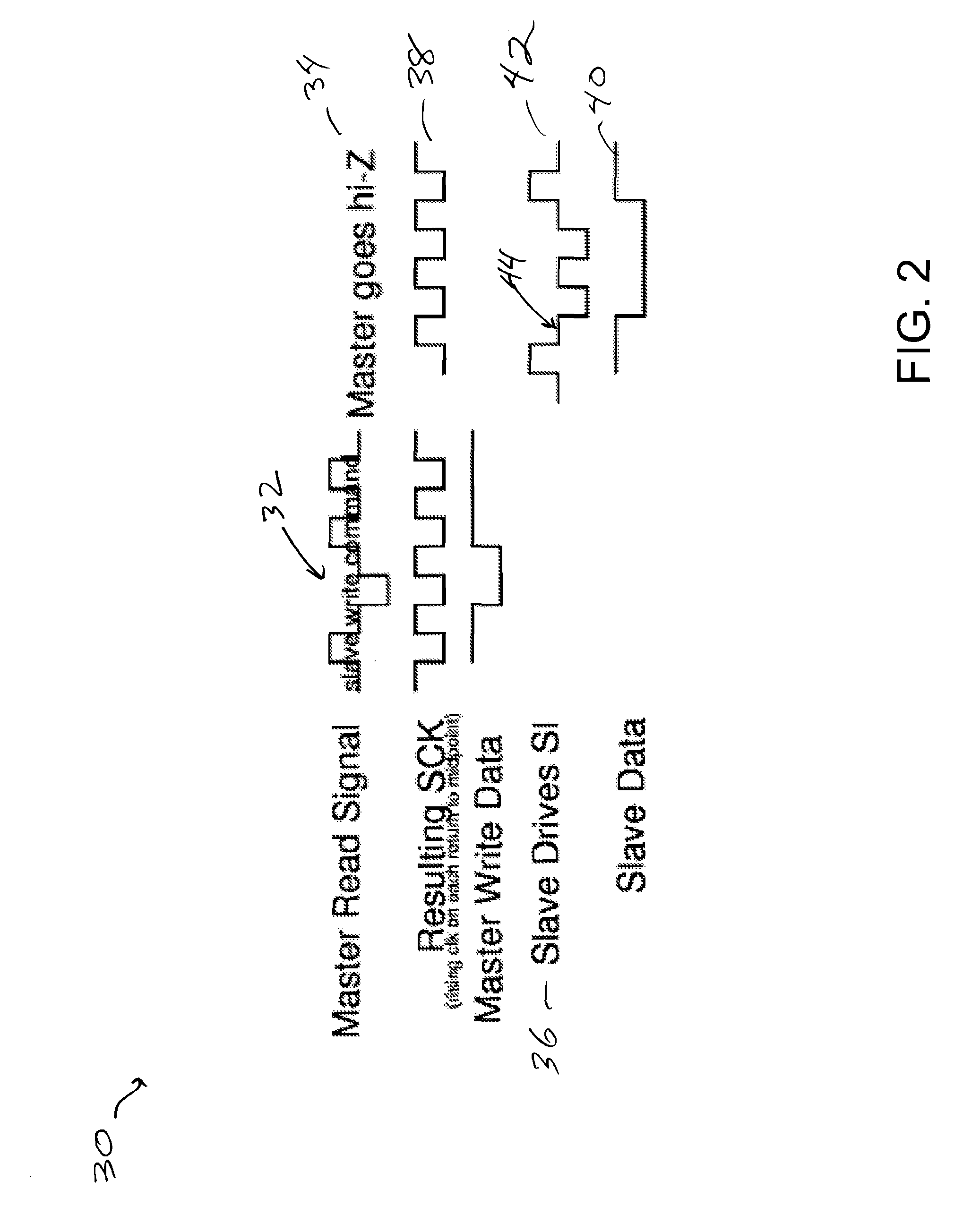Single Pin Read-Write Method And Interface
a read-write and single-pin technology, applied in the field of serial transmission of data, can solve the problems of large amount of support circuitry, complicated protocol for such prior art serial interfaces, and large amount of documentation, and achieve the effect of simple implementation and low pin coun
- Summary
- Abstract
- Description
- Claims
- Application Information
AI Technical Summary
Benefits of technology
Problems solved by technology
Method used
Image
Examples
Embodiment Construction
Voltage Only Method
The voltage signals have 3 (three) levels, say VDD, GND, and VDD / 2, but any three distinct levels can be used. Initially, the master drives the bus, and the slave has a high-impedance state.
Referring to FIG. 1, the master controls the timing and initiates any activity. In the master write signal 12, the master writes to the slave by driving to VDD 14 for a “1”, and GND 16 for a “0”. Slaves remain in the high-impedance state and receive the data. The transition back to the midpoint 18 serves as the serial clock (SCK) 20. When the slave drives the serial interface, it controls the timing. Thus, for both the master and the slave, the serial data 22 is VDD (1) or GND (0) and the transition to VDD / 2 indicates a clock 20.
As shown in FIG. 2, when commanded by the master, the slave drives the bus and the master assumes a high-impedance state. In FIG. 2, the master goes the high-impedance state 34 after it sends the slave write command 32 in anticipation of the slave contr...
PUM
 Login to View More
Login to View More Abstract
Description
Claims
Application Information
 Login to View More
Login to View More - R&D
- Intellectual Property
- Life Sciences
- Materials
- Tech Scout
- Unparalleled Data Quality
- Higher Quality Content
- 60% Fewer Hallucinations
Browse by: Latest US Patents, China's latest patents, Technical Efficacy Thesaurus, Application Domain, Technology Topic, Popular Technical Reports.
© 2025 PatSnap. All rights reserved.Legal|Privacy policy|Modern Slavery Act Transparency Statement|Sitemap|About US| Contact US: help@patsnap.com



